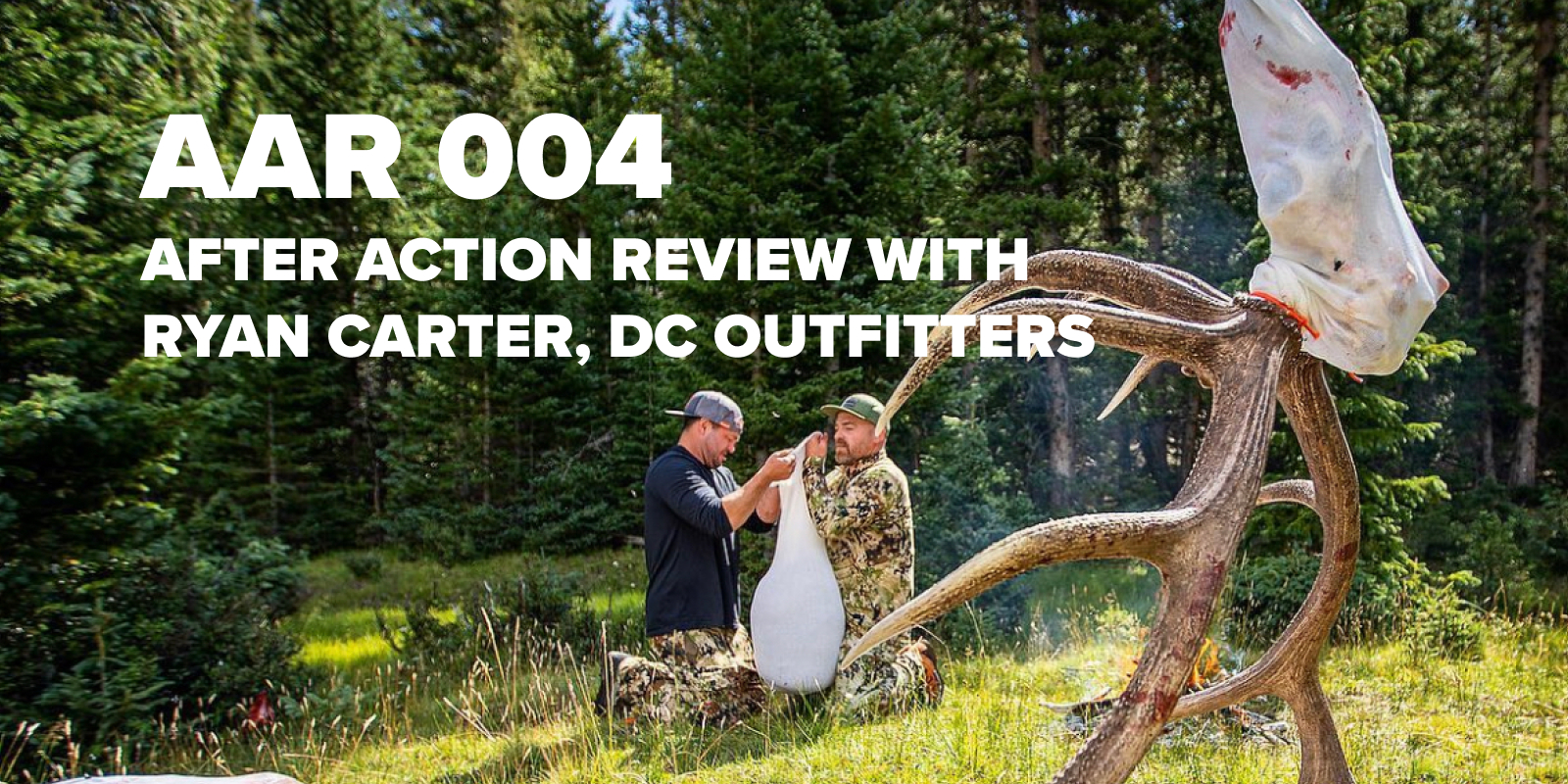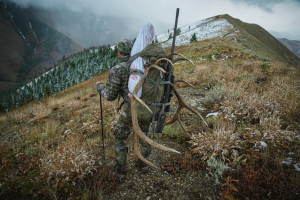AAR 004 - 2022 Archery Elk Season

AAR 004
AFTER ACTION REPORT WITH RYAN CARTER, DC OUTFITTERS
The US Military uses AARs as a structured review or de-brief (debriefing) process for analyzing what happened, why it happened, and how it can be done better by the participants and those responsible for the project or event.
The goal of this article is to look back on the season and give our audience a preview of some lessons you learned. Speaking from personal experience, everytime I go hunting, there are things that I do right, and things that I do wrong. Looking back on these can help us become better hunters, and by sharing these with others, maybe they can learn from our successes and mistakes.
Lessons Learned from Archery Season:
Q: What are 1-2 things you did right this season?
A: Two lessons learned: #1 - Evening sits in treestands for elk are way more effective if you wait to get into stand after the thermals have switched. Sit times are shorter and bulls that typically bed above their cows or feeding area aren’t blown out before opportunity is present. #2 - Elk are a waiting game; patience pays. In almost every scenario the hunt got better as the days started winding down.
Q: What are 1-2 things you did wrong this season, even if you did end up killing an elk?
A: Allowed one archer to take a long distance shot; elk need penetration, close range shots are always better.
Q: What two lessons from the season will you implement next year to increase your chances of success?
A: Shorten my ambush periods. In elk hunting, longer sits aren’t always more productive. Spend more time glassing and daytime bugling.
Elk Hunting Questions:
Q: Scenario: you draw a tag in a unit you’ve never hunted/been to before...where do you start?
A: There's a reason you put in for that unit. Start there; whether a friend or social media slip up, dive deeper into what possessed you to follow through with that spot. Other options are talking to game biologists, application services, and forums. As always, footwork is ALWAYS needed.
Q: If you had only one week to hunt during September, which would you pick & why?
A: September 20th is the universal punch card for the rut. Of course weather always trumps, but if I’m shooting in the dark that is my go time.
Q: Can you give a short run-down on your strategy for calling elk? When do you cow call, when do you bugle, etc...
A: I never cow call, and rarely bugle. Being vocal only allows elk to pinpoint you. Sometimes that is necessary, but on public land I do better with one call to let them know I’m around and then follow up making herd noise. In my experience elk will run at noise and tip toe around vocal elk
Q: Spotting scope or binos on a tripod? Or both, dependent on where you’re hunting?
A: When going in deep a good pair of 15’s on a monopod is clutch. If the walk is under 2 miles, give me a spotting scope everyday all day.
Q: What are your top two tips for finding elk in a new area?
A: Simple. Water & benches.
Q: What is your favorite way to prepare elk meat?
A: Less about the actual cooking preparation, but before that, get the hide off as soon as possible. Hang in a cool place for 2 weeks if possible..
Boot Questions:
Q: What are your go-to Crispi boots for archery elk hunting?
A: Thor II GTX no question.
Q: Does your decision on model change depending on conditions? Area? Style of hunting?
A: When the temps cool off and the vegetation starts to strip I like a stiffer and less breathable option than the Thor. I typically switch out to my Briksdals after Oct. 1
Q: What specific features make an archery elk hunting boot different from say a rifle season boot, or a spring bear hunting boot?
A: See previous answer
Q: Scenario: you get a new pair of Crispis one month before elk season begins...What does your process of getting those boots ready to hunt look like? (Break-in, conditioning, etc.)
A: If you need a ‘break in’ period on your boots, your feet are soft AF… switch out to a stiffer boot nancy.






